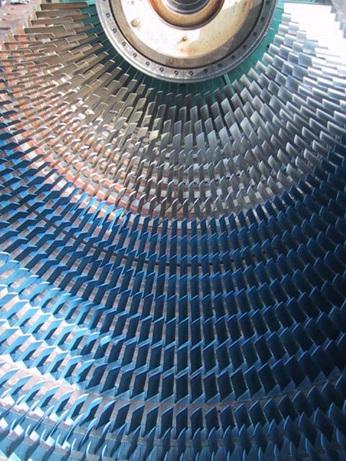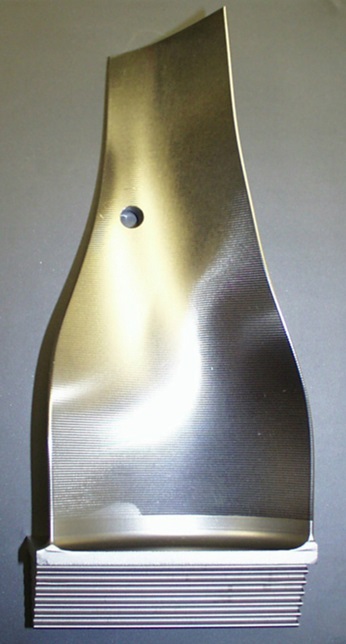Brochures
-
Gas Turbine Rotor Life AssessmentpdfLanguages:

These are used for turbine shafts and turbine casings, as well as for the blades and vanes of both compressors and steam turbines.
The properties of most materials are determined by the manufacturing heat treatment as well as by their composition. For most materials, heat treatments are an absolute necessity in order to obtain the required strength, ductility, creep resistance, corrosion resistance, or hardness.
The type of heat treatment required varies considerably for different groups of materials. For a given material, different heat treatments may be required for manufacturing, welding, hardening, or restoration.
Every day our experienced staff welds turbine shafts and turbine casings, as well as blades and vanes of both compressors and steam turbines. A key factor for success is a well-designed heat treatment procedure during and after the welding operation.
These alloys are typically used in combustion components and similar low-stressed components.
The alloys contain a high percentage of alloying elements. Their austenitic structure is dense, which is beneficial for creep resistance, and it is stable at all temperatures. Since there is no phase change, austenitic alloys will not harden by thermal cycling in a heat treatment or during welding.
Solution heat treatments can be used in finished components to dissolve brittle phases and grain boundary carbides. Overheating can create irreparable grain growth. We select the process with care to avoid damage to your components.

These alloys are used in blades and vanes in the high-temperature section of gas turbines.
As described above, used components may have developed a modified (degenerated) structure. A degenerated structure exhibits coarsening of existing phases and formation of new but deleterious phases, like the sigma-phase which is extremely brittle.
These phases create local inhomogeneous areas but the overall composition of the alloy remains unaffected. A restorative heat treatment starts with a very high-temperature solution heat treatment that dissolves both precipitates and deleterious phases. After this step, a modified version of the standard heat treatment is used to recreate the intended original structure and distribution of the precipitates.
Talk or write to our experts to find your best solution.